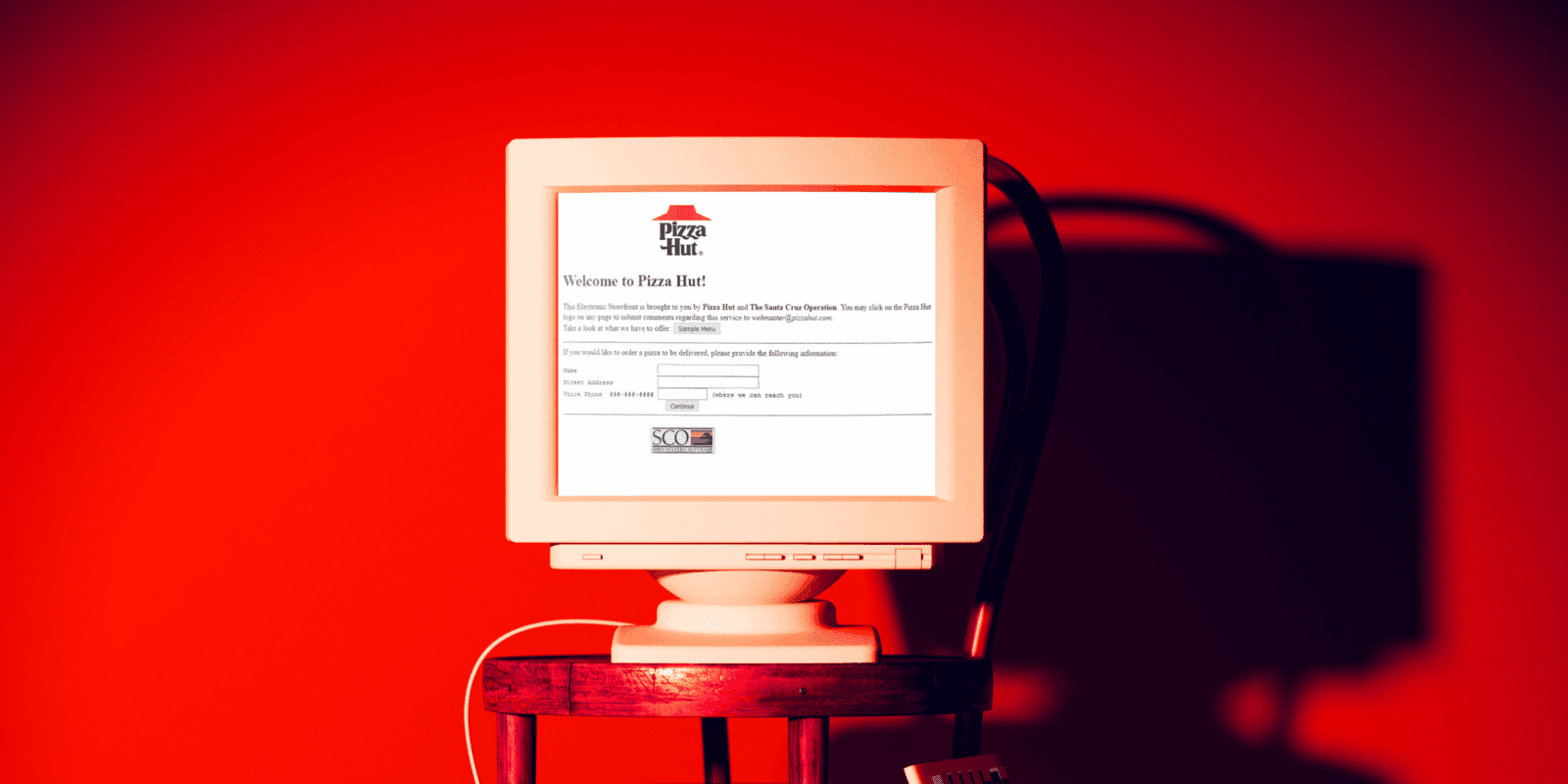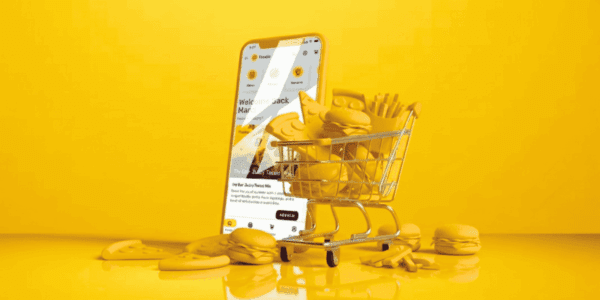

The World Wide Web began as a concept in 1989, and by August 1991, it became publicly accessible. That makes today, August 1st, 2025, the 34th anniversary of the internet as we know it.
There are persistent stories suggesting Papa Johns or Domino’s was the first to sell pizza online. But according to most historical accounts, it was Pizza Hut that quietly made digital history. In 1994 (just three years after the web became public), they launched PizzaNet, an experimental site in Santa Cruz, California.
It’s a surprisingly poetic detail, pizza was not only the first food to be ordered online, it may well have been the first physical item ever sold on the web. The very first online order placed by humanity, therefore, was: a large pizza with pepperoni, mushrooms, and extra cheese.
On this day, we sat down with someone whose work touches almost every digital order that flows through our platform: Mike Van de Weerdt, our Product Owner for eCommerce, to talk about where the QSR industry really stands with digitals.

Some QSR brands still have one person in charge of eCommerce. One.
Mike’s been in eCommerce for nearly a decade, and it shows. He’s constantly scanning outside the QSR world, Coolblue, Bol.com, and Amazon, and sees the gap between the food-delivery industry and a true eCommerce experience.
The big players have entire teams A/B testing search, running segmented campaigns, optimising conversion flows. I see a lot of QSRs just getting started with emails and discovering push notifications.
But he’s quick to add: it’s not a tech problem. It’s structural.
They haven’t needed to think digitally before. Now, all of a sudden, there’s pressure. Competition. And marketplaces like Uber Eats, which are handling it all for them, at a cost, of course.
When asked whether there’s a myth that keeps resurfacing in QSR eCommerce, one answer came quickly: the idea that a flashy website equals a better one.
Animations, full-screen carousels, immersive UI effects… But the more we talked, the clearer it became: this aesthetic-first mindset often distracts from what actually drives conversions, especially when it comes to ordering food.
Mike believes that too much unnecessary effort goes into looking different these days and not enough into being useful. His philosophy?
Let the customer decide what they want. Use the data to guide how you show it. Make the food findable. Make the journey convenient. Make the customer feel recognised.
Of course, give something for the eye as well. Visually attractive design is a big part of a strong online presence. But only when it complements the essentials: clarity, speed, trust.
When asked what the most underused part of the product he’s building at S4D, Mike has his answer without hesitation.
We are delivering new features bi-weekly. But so much of what a QSR chain needs is already in the system, especially when it comes to data.
From customer segmentation to purchase frequency, favourite items to lifetime value, the tools to build smarter relationships are already live and powerful, yet not used to their full potential.
You don’t always need a new loyalty gimmick. Sometimes, it’s about using what you already know, who your customers are, how often they come back, what they care about, and then knowing how to combine those insights in a smart way.
He gives a quick example.
A common one: the marketing team wants a huge homepage banner. It looks impressive, but if you check the data, most users scroll right past it. It doesn’t help them find what they want.
Mike’s focus has been on loyalty these days. Consistently launching loyalty features sprint after sprint. He’s most looking forward to the results of the “Spend X more to unlock free delivery” gadget in the basket and the earlier introduced personal deals and offers. But he sees these enhancements of our platform as just the beginning:
Loyalty isn’t just points. It’s optimizing and fixing the experience. If you’re late on delivery, send a promo. Customers with a poor experience can easily be turned into raving fans. That’s where value is. That’s what shapes our roadmap.
Search is another pain point he wants to crack. Most QSR websites don’t have one, or if they do, it’s bad.
You search for ‘chicken’ and get a pizza named Chicken Supreme. But what about the salad with chicken? Or the bowl with better margins? Search should support the business, not just match keywords.
While discussing all things WWW, one idea that emerged strongly in our conversation: eCommerce shouldn’t just be optimised for clicks, it should be optimised for margins.
Right now, the real challenge is profitability. Labour costs are still rising. Food costs are unpredictable. The smartest product managers are thinking like revenue managers.
The S4D platform already tracks data points like food cost per item and product-level margins, but that information is often used by operations or finance, not by the people managing the digital customer journey.
Imagine if search results didn’t just match keywords, but also prioritised the products with better margins. Or if recommendations nudged customers toward more profitable choices for the business.
It’s a relatively small shift in logic, but a meaningful one. And it’s exactly the kind of thinking shaping where our platform goes next: connecting operational insights directly to the customer experience, so QSR brands can drive smarter decisions with every order.
At the end of the conversation, we threw out the classic hypothetical:
How could a QSR brand double their digital revenue by next year?
“Half the price.” – Mike laughs.
Then walks it back, and reframes:
There isn’t really a shortcut… And it also depends on the brand, but if you’ve got 50 locations? Go local. Find the right areas. Build loyalty. And improve speed of service, because nothing kills repeat orders like a bad first experience.
Everyone wants fast results, but unfortunately, digital growth doesn’t work like that. You build it step by step. You learn who your customers are, and you give them reasons to come back.
Ultimately, it’s all about delivering consistently good experiences and a platform that enables you to do it.
Interested in our Online Ordering solution?
Get in touch!

